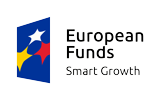Projects
Our research and R&D projects are funded by the European Commission grants within FP5, FP6 and FP7 Programs, under the “Life sciences, genomics and biotechnology for health” thematic area and by grants from the National Centre for Research and Development, the Foundation for Polish Science and the Polish Ministry of Science.






